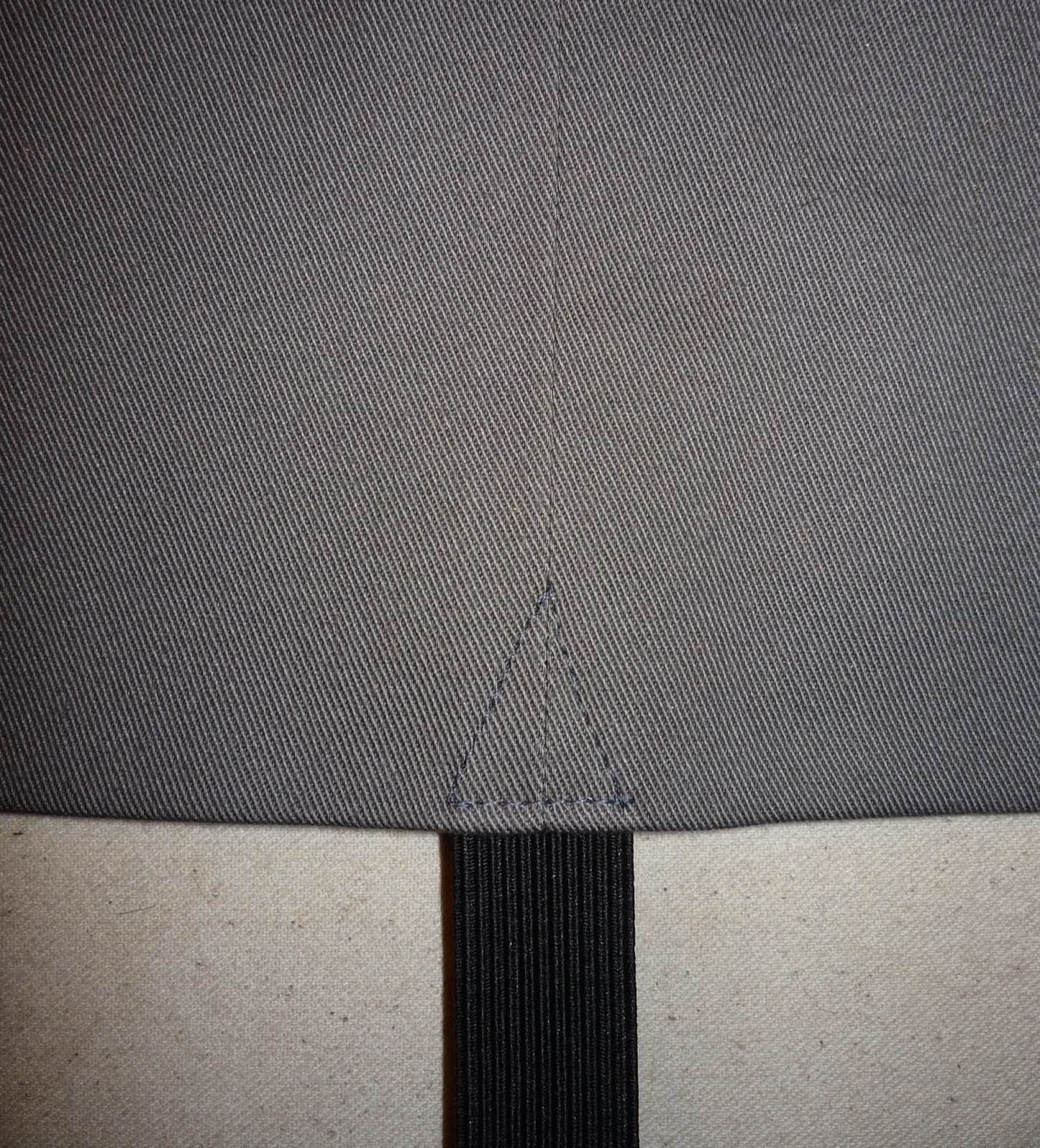 |
| Just a few loose ends to tie up ... |
Fold the top 1" of the zipper out of the way and hand sew a hook-and-eye closure to the body facing, taking care to only sew through the facing (and seam allowances) and not stitching through to the right side of the garment!
NOTE: We recommend using one regular (medium) size hook-and-eye closure, although the screen-used uniforms seemed to have sometimes used one medium closure or two small ones. The choice is up to you! We've had better results with the single medium closure, though.
Put your jumpsuit on again and determine adequate pants' hem allowance. (The pattern's default pant leg hem allowance is 2").
Pin your hem allowance place if possible. (It helps to have a partner with this.)
Take your jumpsuit back off and press your pants' hem allowance upward.
Hand sew the hem allowance to the pant legs.
Press the bottom of the pant legs.
NOTE: We recommend hemming your pants as pictured above - that is, with the split's extra seam allowance pressed over the hem allowance, as an observer is more likely to get a peek inside of the pants split than up the bottom of the pant leg. To accomplish this, simply fold the split's extra seam allowance out of the way, press the hem allowance upward and hand sew it into place, fold and press the split's seam allowance back away from center, slip-stitch the layers together along bottom, and hand sew the split's seam allowances to the hem allowance.
 |
| DS9/NEM cadet jumpsuit pictured |
Cut two lengths of ¾" elastic for the "stirrup" at the bottom of the pant legs.
The exact length needed may vary from person to person depending on the length of the pant legs and the width of the wearer's boots, but we generally recommend cutting these about 8" long.
Sew the elastic stirrups to the bottom of the pant legs at the side seams with a triangular stitch (with the "flat" side of the triangle on bottom).
(The above example was done in gray thread slightly darker than the jumpsuit body, so it's easier to see; done in matching thread it would be practically unnoticeable.)
NOTE: Depending on the placement of the sole and shape of the bottom of your boots, you may find 1" elastic to be preferable and more effective than the ¾" pictured above.
PREVIOUS: Tutorial, part 12 - Internal Belt
NEXT: Tips for Achieving an Ideal Fit
PREVIOUS: Tutorial, part 12 - Internal Belt
NEXT: Tips for Achieving an Ideal Fit


No comments:
Post a Comment